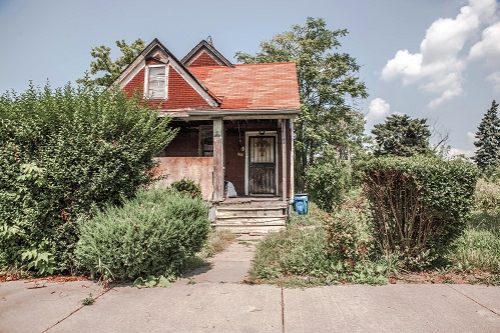What is mold insurance coverage?
Homeowners insurance mold coverage is a complex issue. Mold is covered by home insurance only when it’s a direct result of a covered loss unless your policy specifically excludes it.
For example, if a storm damages your roof, allowing water to get inside, and mold results from that water damage, home insurance will likely cover it. That’s because the particular type of water damage and the peril (a storm) that caused it are covered by home insurance.
However, this coverage is limited. Most insurance policies put a dollar limit on mold coverage. Some policies don’t cover it at all. A mold endorsement can provide extended coverage for mold in more situations and at a higher limit.
What does mold insurance cover?
As noted above, the mold coverage included with your home insurance is limited to mold that results clearly and directly from a covered peril, and there’s a cap on that coverage.
“Most home policies include coverage for mold if damage [results] from a covered peril, such as a sudden and accidental water leak. Other perils, or causes of loss, may not cover for mold damage,” McKenzie says.
A mold insurance endorsement may lift that cap, providing extended coverage for mold remediation. It may also allow for mold to be covered in extended circumstances. If mold is entirely excluded from your policy, an endorsement is the only way to get coverage. However, mold insurance endorsements vary from company to company, and the coverage will differ.
If you have mold coverage, it will pay for:
- Removal of damaged materials, including drywall
- Cleaning and removal of the mold
- Repair or replacement of anything damaged by the mold
What isn’t covered by mold insurance coverage?
If your policy covers mold, there will still be exclusions. First, mold caused by a flood is always excluded because floods are excluded from home insurance coverage.
Even with a mold endorsement, you may still be denied coverage if a covered peril didn’t cause the mold. Mold endorsements may include additional perils, increase coverage, or add coverage for mold caused by a covered peril.
Home insurance generally won’t cover anything caused by poor maintenance, or that could have been prevented. If your window frames are rotting, or if your basement is very humid and you don’t take steps to deal with it - like replacing windows or buying a dehumidifier - insurance generally won’t cover resulting mold.
Read your policy carefully to see what isn’t covered.
Is mold insurance worth it?
Mold endorsement insurance coverage may be worth it if you live in a location with high humidity or in a home prone to mold damage; for example, an older home with a lot of wood or that isn’t sealed as well as a newer one.
“Homeowners who live in certain geographic areas that are more prone to mold damage may benefit from adding a mold endorsement to their insurance policy,” McKenzie says
Of course, if you live in a high-risk area, the cost of a mold endorsement on your insurance will also likely be higher.
What insurance companies cover mold damage?
Many companies include some level of mold coverage. How much coverage is included varies and also varies by state, so make sure to ask when requesting a quote. Some of these companies also offer mold endorsements.
- Nationwide
- American Family (endorsement available for extended coverage)
- Travelers
- Liberty Mutual
- Kin Insurance
- USAA
Many other companies may include mold coverage; it’s important to ask.
FAQ: Mold insurance coverage
Does home insurance cover mold from water damage?
Mold from water damage is covered if the source of the water damage is a covered peril. For example, water damage from a burst pipe is covered, so the mold will also be covered.
Does homeowners insurance cover mold in a crawl space?
Mold in a crawl space will only be covered if caused by a covered peril. Mold resulting from humidity or other non-covered perils will not be covered.
Does home warranty cover mold?
Home warranties typically do not cover mold. Home warranties usually cover repairs or replacements of major home systems and appliances due to normal wear and tear. Mold issues are generally considered a result of environmental factors or maintenance problems, which are not covered.




